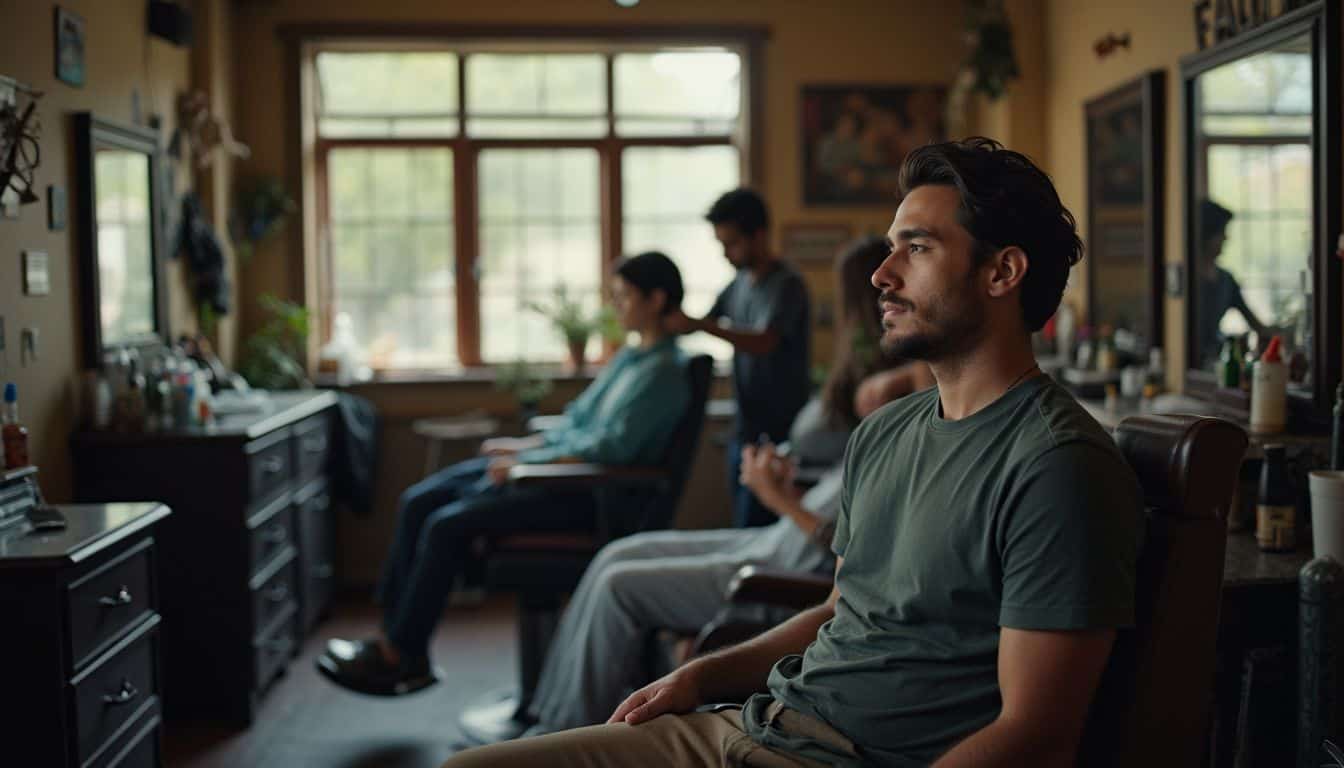Trying to decide between a hair salon vs barber shop? It’s a common question. This guide will walk you through the key differences in services, skills, and price to help you find the perfect fit for your style.
The choice often comes down to your hair goals. Hair salons are your destination for a wide range of beauty services, especially complex color work like balayage, deep conditioning, and smoothing keratin treatments. Barber shops are masters of classic cuts, precision grooming, beard trims, and the traditional straight razor shave.
Let’s look at the five main differences so you can choose the right chair with confidence.
Key Takeaways
Hair salons excel at advanced color and treatments like balayage and Olaplex bond repair. Barber shops are specialists in classic men’s cuts, sharp fades with clippers, and traditional straight razor shaves.
Barbers typically need at least 1,000 hours of training focused on clipper work and shaving. Stylists complete more hours, often around 1,500, to earn a state cosmetology license covering hair, skin, and nails.
Salon haircuts generally cost more, with women’s cuts averaging $45 to $75. Barber shops are often more budget-friendly, with men’s cuts typically ranging from $25 to $50.
Community health initiatives often partner with these spaces. Programs like the Black Barbershop Health Outreach Program have successfully screened over 30,000 men for conditions like high blood pressure in a trusted setting.
In 2025, expect a bigger push for eco-friendly products and digital consultations in both. Barbershops are highlighting premium beard care, while salons are expanding wellness services like scalp treatments.
Table of Contents
Key Differences Between Hair Salons and Barber Shops
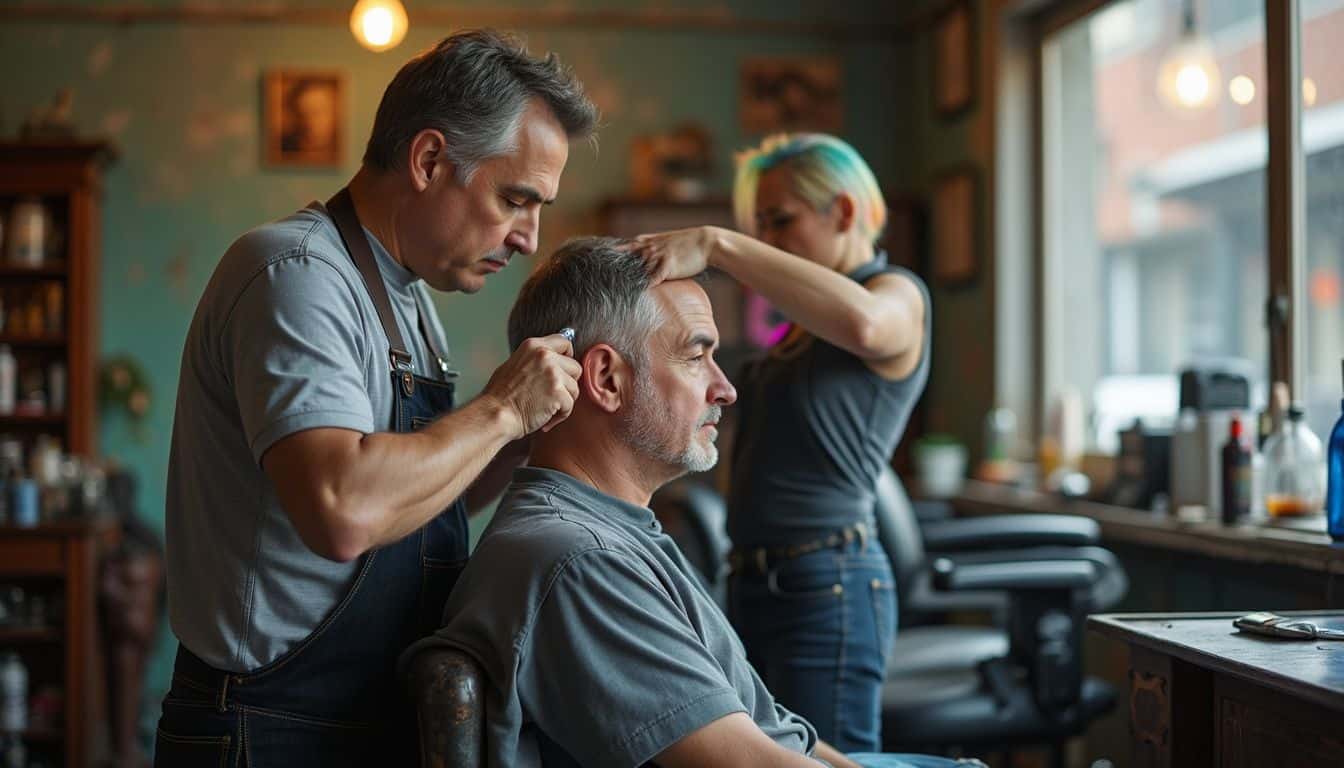
While both places cut hair, their primary focus, training, and service menus are quite different. Salons are geared toward a wide variety of hair styling, chemical processing, and color services. Barbers, on the other hand, are specialists in short, traditional haircuts, clipper work, and straight-razor shaving.
What services do hair salons and barber shops offer?
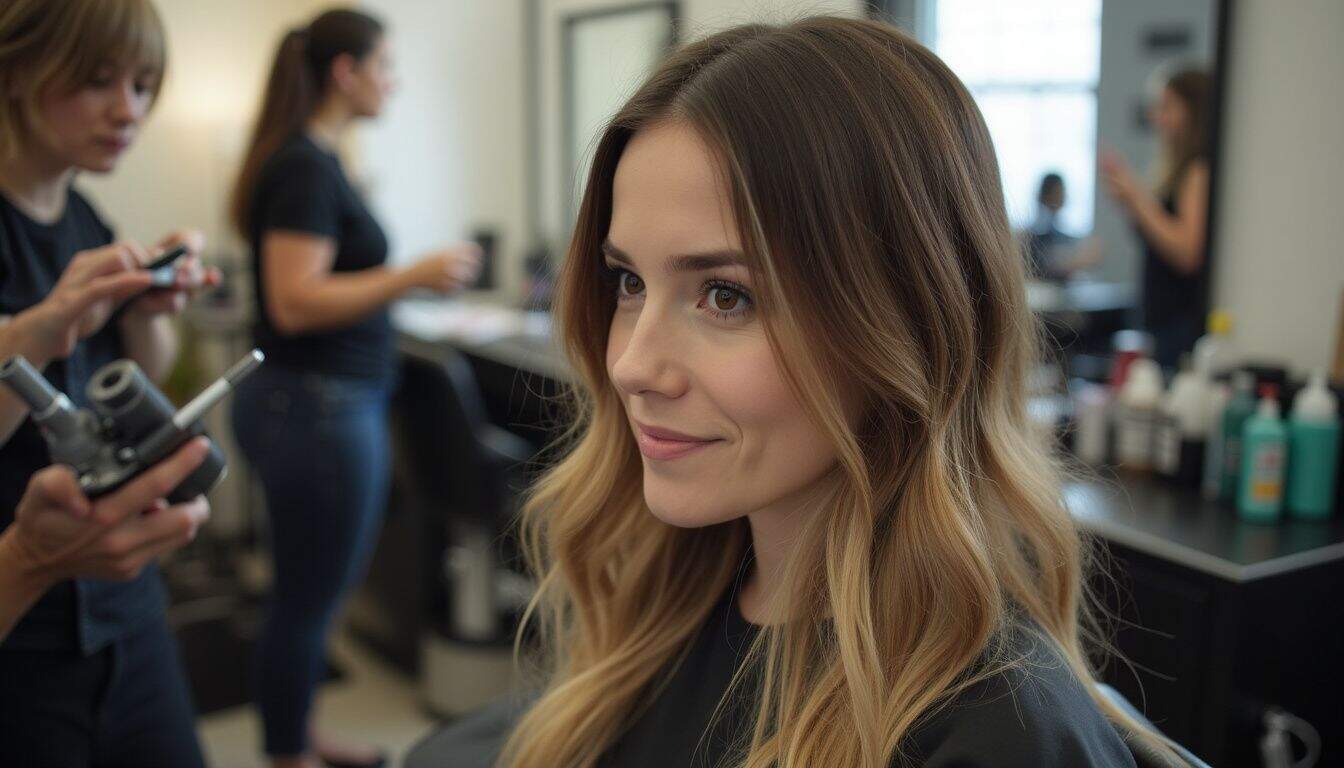
A quick look at the service menu reveals the core strengths of each. Salons are designed for longer appointments involving color, texture, and styling, while barbers excel at efficient, precise cuts and beard maintenance. This chart breaks down the most common offerings.
| Service | Hair Salon | Barber Shop |
|---|---|---|
| Haircuts |
|
|
| Color & Treatments |
|
|
| Styling |
|
|
| Facial Hair & Shaves |
|
|
| Beauty Services |
|
|
| Products & Tools |
|
|
If you’re looking for a major color transformation or need specialized care for damaged hair, a salon is your best bet. Stylists use professional product lines like Wella and Aveda and are trained in the latest techniques to protect hair during chemical services.
For a sharp, clean haircut that’s easy to maintain, a barber is the expert. They specialize in using clippers with multiple guards to achieve precise fades and crisp lines, making them ideal for anyone on a tight schedule.
To keep all hair types healthy and vibrant, especially after chemical or styling treatments, having a high-quality shampoo and conditioner is essential for at-home care. To see a strong example of a full-service salon, explore this hair salon in Atlanta, GA, and notice the variety of modern techniques on display.
How do expertise and training differ between salons and barber shops?
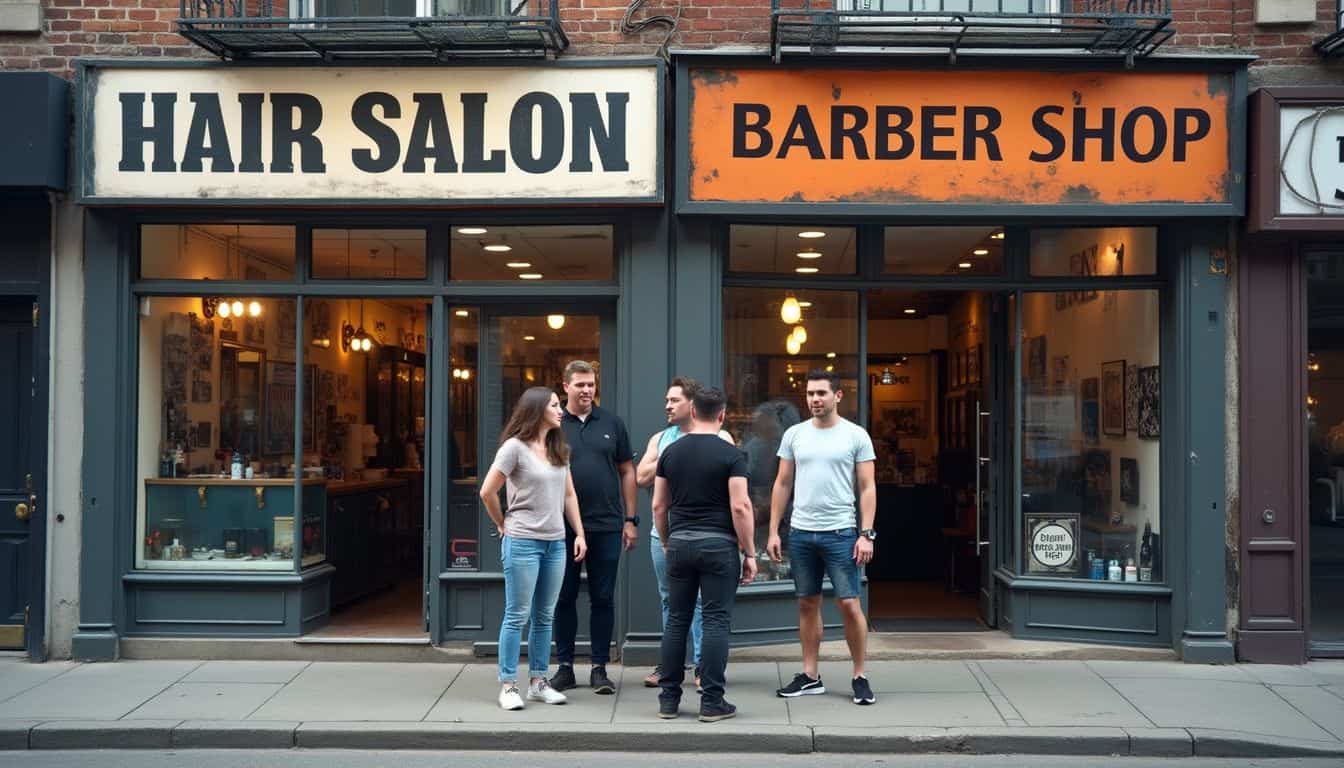
The license hanging on the wall tells a story about the professional’s training. While both are highly skilled, their education focuses on different areas, which influences the services they master.
| Aspect | Barber Shops | Hair Salons |
|---|---|---|
| Certification & Licensing |
|
|
| Training Hours |
|
|
| Skill Emphasis |
| |
| Services |
|
|
| “Insider” Tip |
|
|
| Integration |
| |
Atmosphere and Ambiance
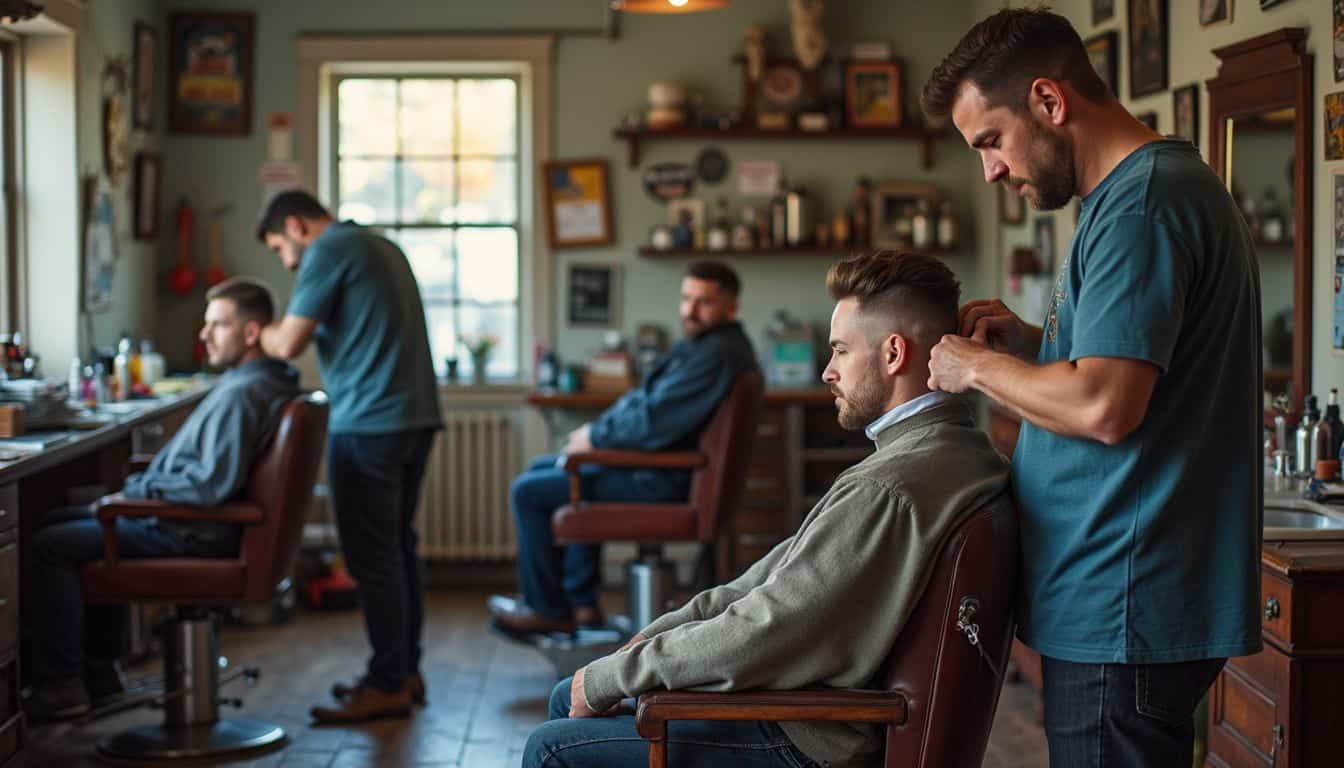
The vibe of a place can be just as important as the haircut. Salons often cultivate a relaxing, spa-like feel, while barber shops tend to be lively, social hubs.
What is the traditional vibe of barber shops like?
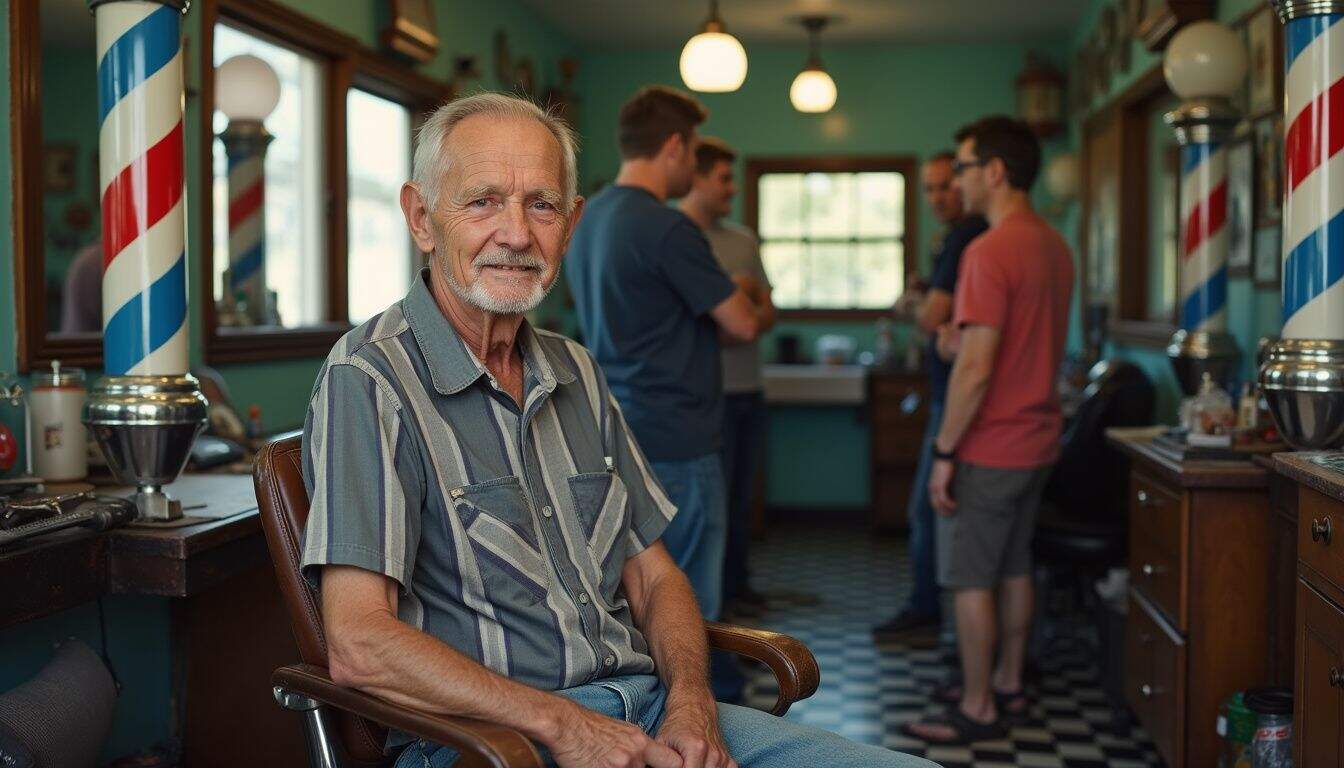
Barber shops typically have a classic and masculine vibe. Picture sturdy leather chairs, the hum of clippers, and maybe a sports game on TV. The iconic red, white, and blue striped pole is a nod to the profession’s history, when barbers also performed minor medical procedures.
The conversation is often lively and flows between chairs, covering everything from local news to last night’s game. Many traditional shops operate on a walk-in basis, creating a spontaneous and communal atmosphere.
The best part of a barbershop is the comfort. You walk out with more than just a clean cut, you leave with a sense of community.
While historically serving a male clientele, many modern barbershops welcome everyone. Pioneers like Martha Matilda Harper, who created the first salon franchise system, championed a culture of inclusive care that continues to influence the industry today.
How do hair salons create a trendy and relaxing environment?
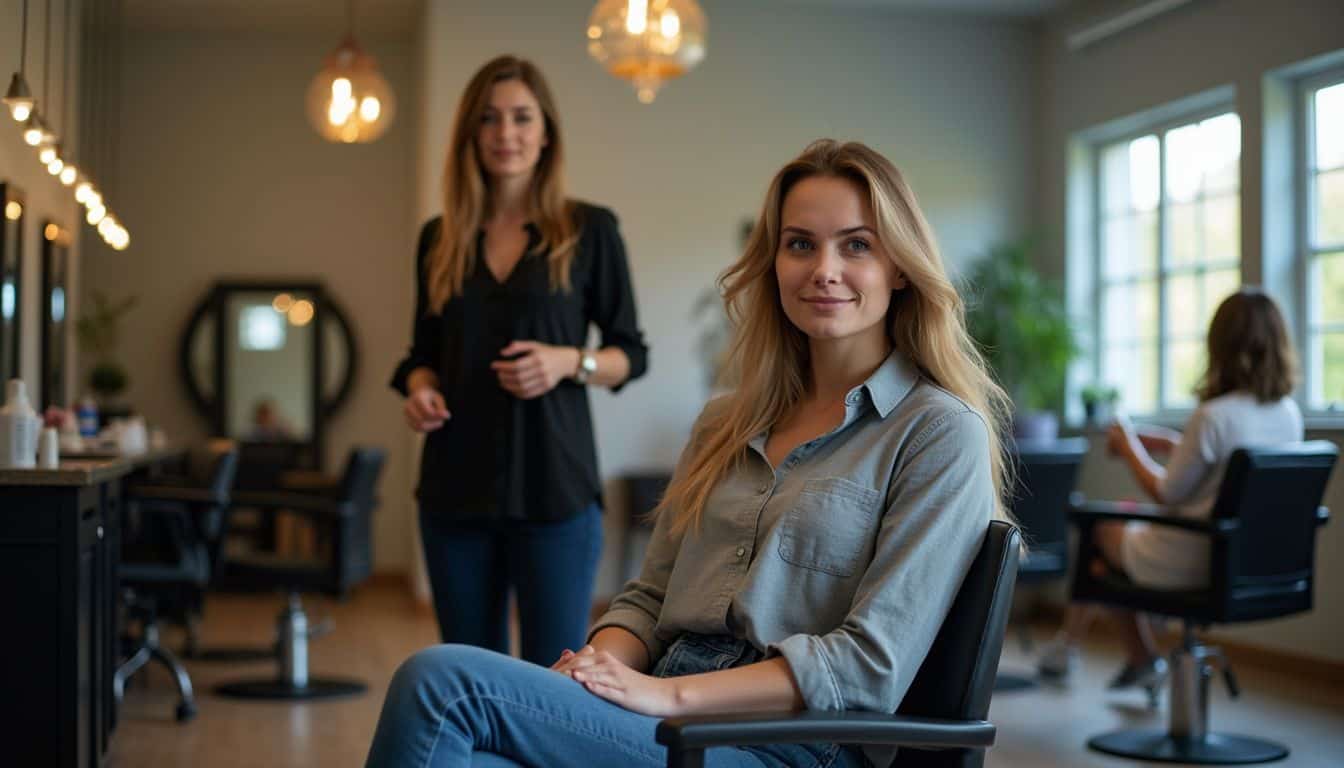
Hair salons focus on creating a modern and relaxing vibe. You’ll often find stylish decor, comfortable washing stations, and soft music. The goal is to provide a pampering experience where you can unwind.
Appointments are standard and often booked through apps like Fresha or Booksy, which adds to the structured, personalized feel. Salons are all about the consultation, taking time to discuss your goals before starting. Many are full-service beauty destinations, offering manicures, pedicures, and other spa treatments in one visit.
What factors affect the cost at hair salons and barber shops?

Pricing varies based on location, experience, and the complexity of the service. Here’s a quick breakdown of what to expect so you can budget accordingly.
- Typical Price Range: A men’s haircut at a barbershop averages $25 to $50. A woman’s haircut at a salon typically costs between $45 and $75.
- Service Complexity: Salons charge more for services that take longer and use more products, such as coloring, blowouts, and styling. A simple clipper cut at a barber is quicker and therefore costs less.
- Experience Level: Salons often have tiered pricing. A cut from a “Master Stylist” with years of experience will cost more than one from a “New Talent” stylist who is recently licensed.
- Location: Big city prices are almost always higher. A men’s cut in a major metro area can easily exceed $70, while the same service in a smaller town might be closer to $30.
- Add-On Treatments: Salons offer numerous add-ons, like deep conditioning masks or gloss treatments,that increase the final bill. Barbershops might offer a hot towel shave or beard trim for an extra fee.
- Tipping: Regardless of where you go, it’s customary to tip 15% to 20% for good service.
Who are the typical clientele and what communities do salons and barber shops serve?
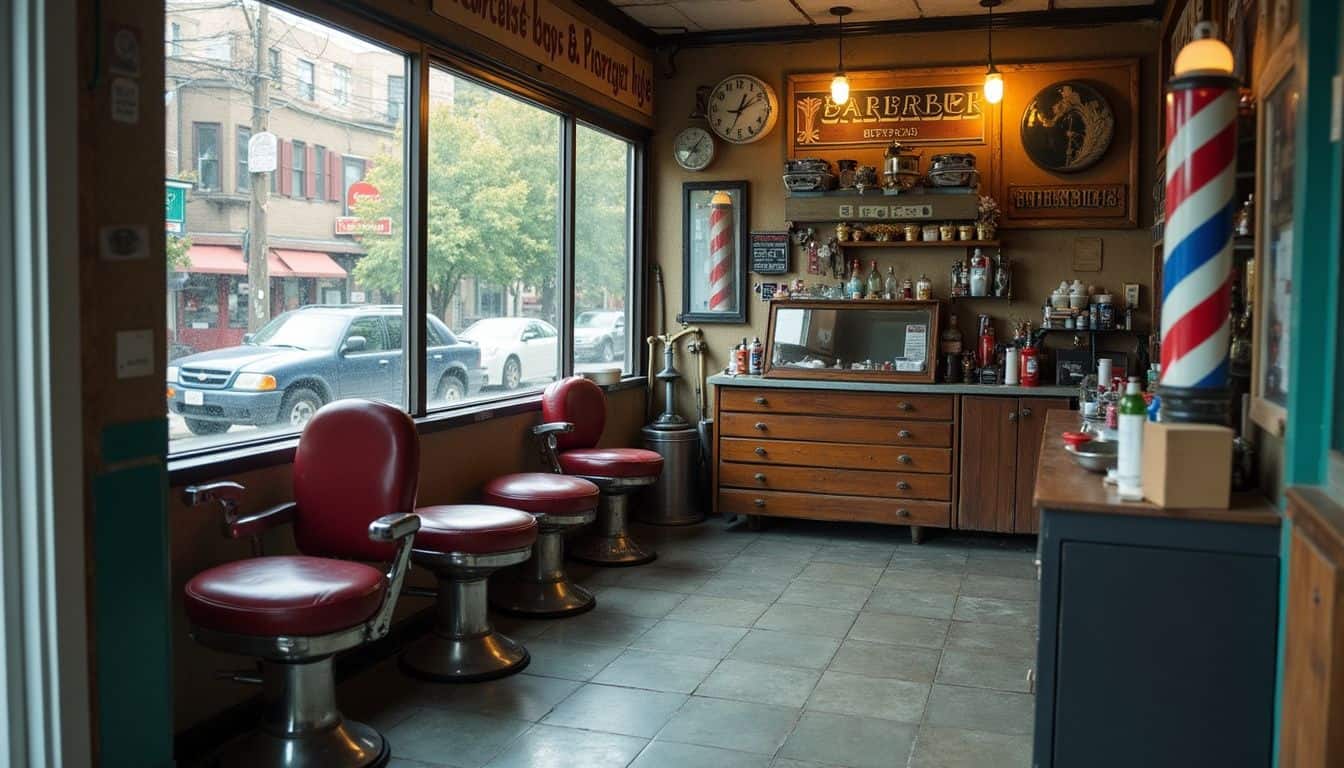
Traditionally, salons have served a predominantly female clientele, while barbershops catered to men. However, these lines are blurring significantly. Today, both spaces welcome people of all genders and ages, reflecting the diversity of their neighborhoods.
Barbershops, in particular, often serve as vital community hubs. A 2018 study highlighted how barbers can act as trusted health advocates. This has led to impactful initiatives like the Black Barbershop Health Outreach Program, which provides health screenings in a familiar environment. A 2019 analysis suggested a national program could prevent over 1,300 deaths from heart disease annually.
Barber shops offer more than haircuts. They are hubs where stories and community wellness come together.
Additionally, the industry is seeing a positive shift toward inclusivity with the rise of gender-neutral pricing. Salons like Hairrari in Los Angeles now charge based on the time and complexity of the cut, not the client’s gender, creating a more welcoming space for everyone. For any health concern mentioned in these community spaces, you should always follow the advice of a licensed doctor.
Choosing the Right Option
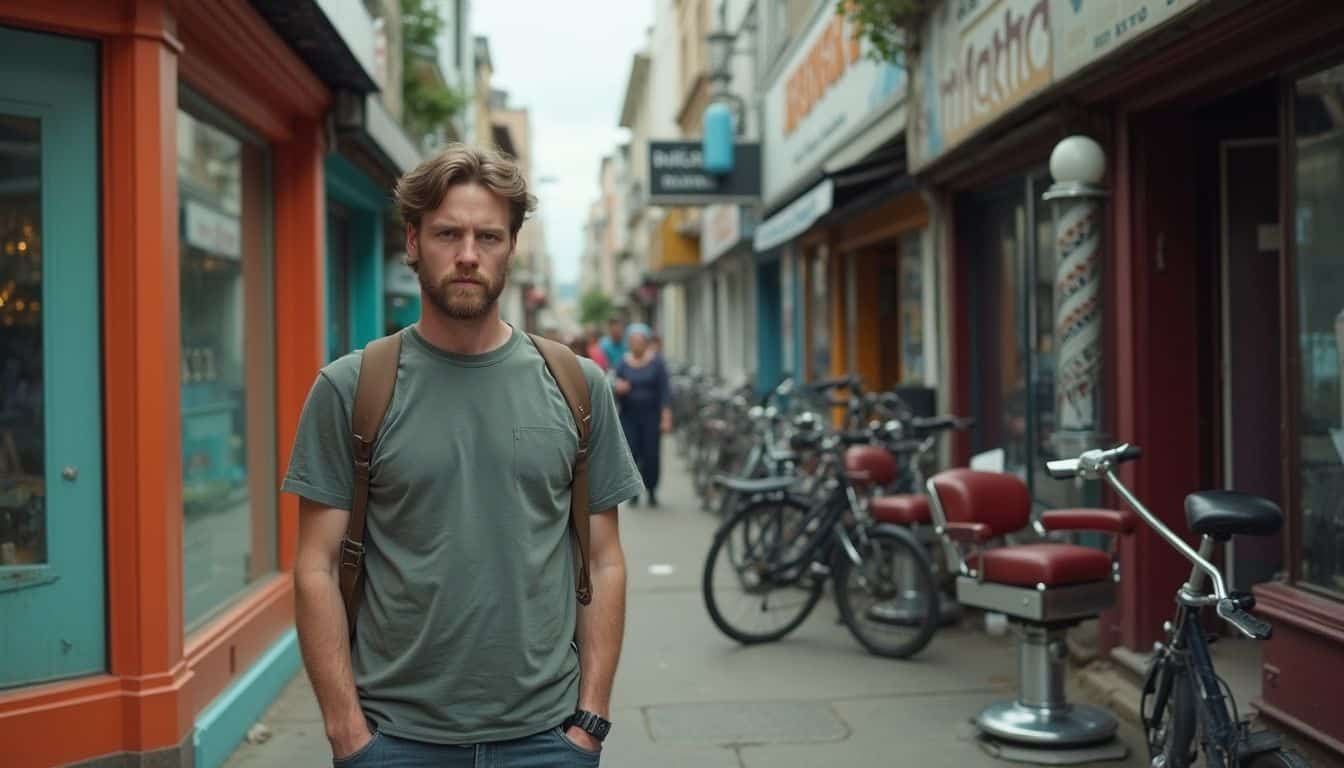
Your ideal choice depends on your hairstyle, your schedule, and the experience you’re looking for. Use these final tips to make the right call.
How does your hairstyle influence the choice between salon and barber shop?
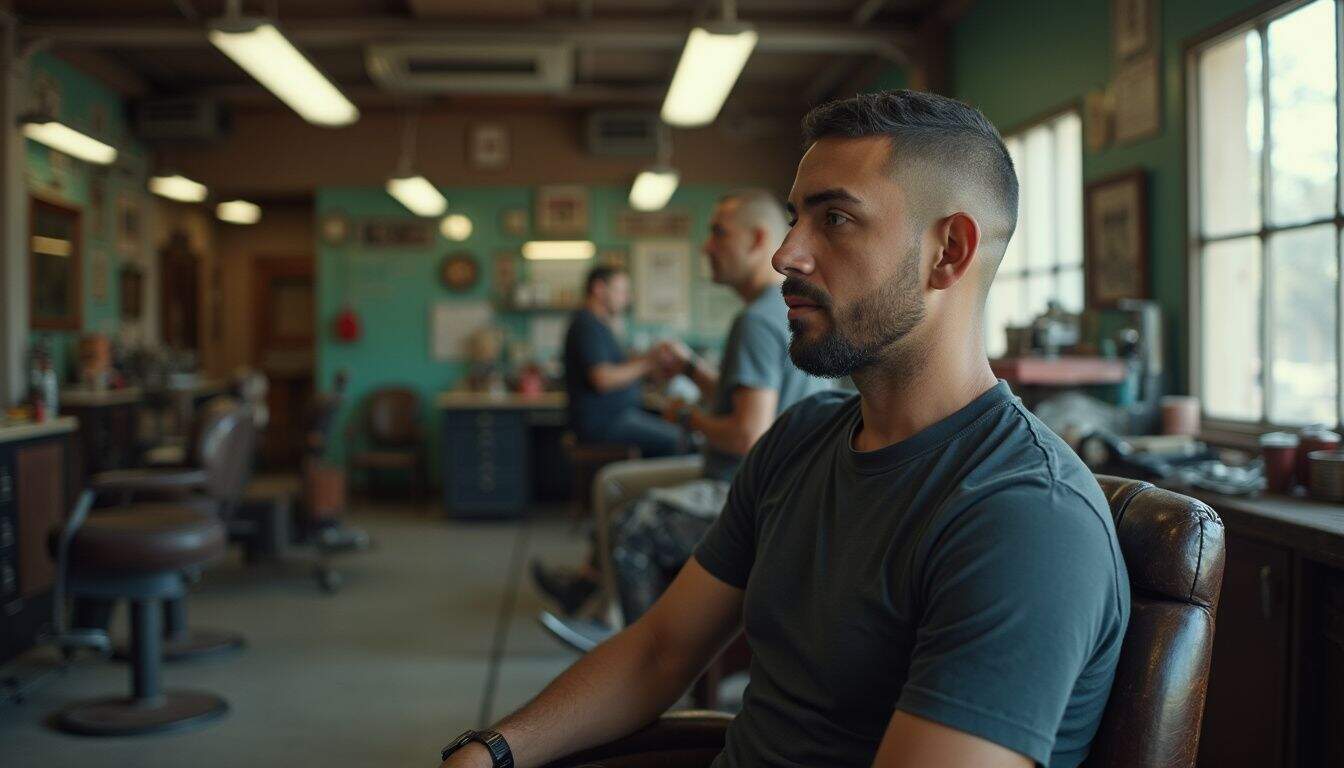
For short styles that require precision clipper work, like fades, buzz cuts, or undercuts, a barber is your best bet. They are masters of creating sharp, clean lines quickly and efficiently.
If you have long hair, want layers, or are looking for color services like balayage or highlights, a salon is the way to go. Cosmetologists are trained in advanced techniques and can recommend personalized home care routines to maintain your style and hair health.
If you have thinning hair and are looking for a flattering style, this guide on the best haircuts for balding men offers great tips that can be adapted by either a barber or a stylist.
How do personal preference and convenience impact your decision?

Your lifestyle plays a big role. Do you prefer a quiet, pampering experience or a lively, social one? Salons offer a relaxing escape, while barbershops are great for conversation and a quick, efficient service.
Consider the logistics. Salons typically require appointments booked in advance, which is great for planning. Many barbershops accept walk-ins, offering more flexibility for a busy schedule. Today, many barbers also use apps like theCut or Squire, blending traditional service with modern convenience.
Ultimately, choose the place where you feel most comfortable and confident in the professional’s skills. A good consultation is key, no matter which door you walk through.
How Will the Hair Salon vs. Barber Shop Landscape Evolve in 2025?
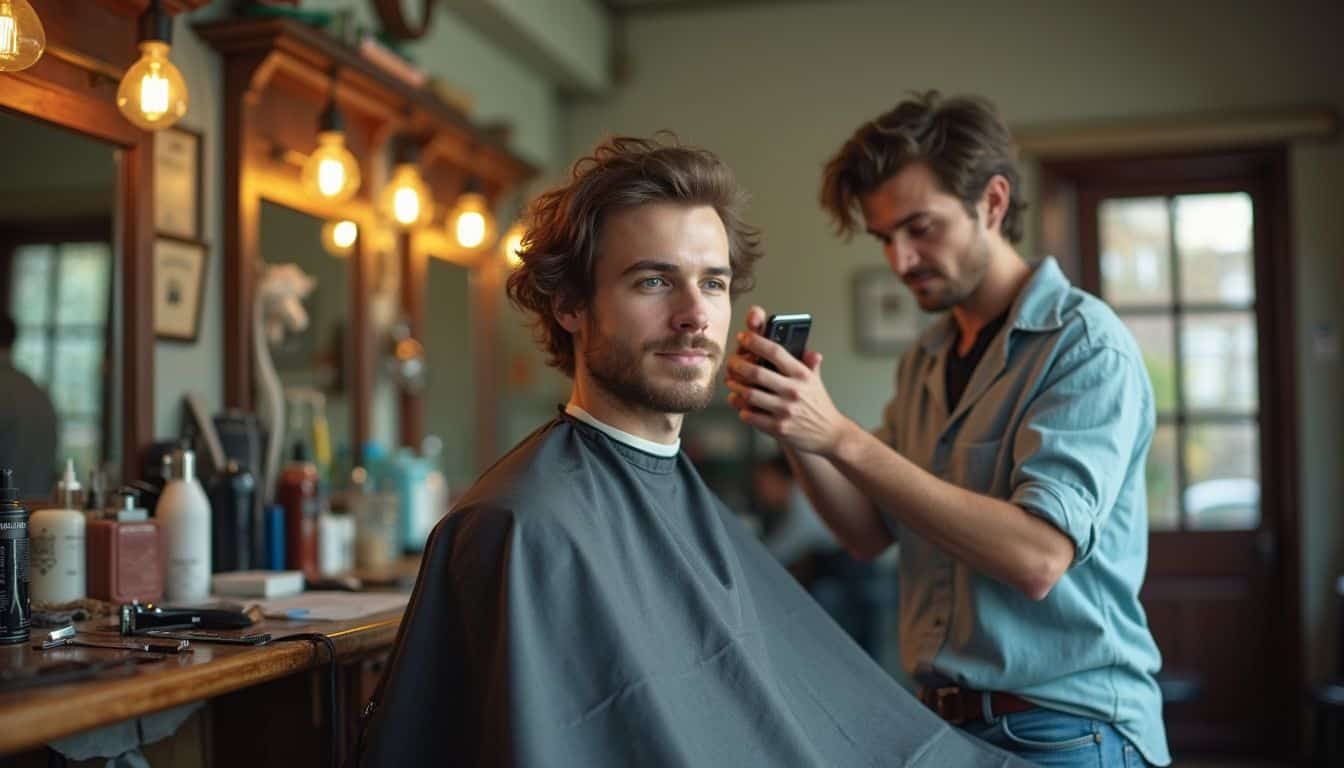
The worlds of barbering and cosmetology are blending, but you can still expect them to evolve along distinct paths in 2025. Barber shops will continue to elevate modern men’s grooming. Expect to see more specialized beard treatments, scalp care services, and a focus on high-performance cordless tools.
Sustainability is also a major trend. Salons and shops are adopting eco-friendly practices like offering refill stations for products and using recyclable packaging. Brands like Aveda and Briogeo, known for their clean formulas, are becoming staples.
Hair salons will lean further into personalization and technology. AI-driven tools for virtual hair color try-ons and smart mirrors are becoming more common. The focus is shifting toward a holistic approach, combining hair health with overall wellness services.
This means more choices and better service for you. Whether you pick a salon or a barbershop, you’ll find smarter, more personalized options that cater to your unique needs.
People Also Ask
What are the main differences between a hair salon and a barber shop?
A hair salon offers a broad range of services including cutting, coloring, chemical treatments, and styling for everyone. A barber shop specializes in short haircuts, clipper fades, and facial hair grooming, traditionally for men.
Which should I choose if I want modern hairstyles or color treatments?
A hair salon is your best choice for modern styles, highlights, balayage, or other chemical treatments. Salon stylists have extensive training in advanced coloring and cutting techniques for all hair lengths.
Are barbers better for classic men’s cuts and shaves?
Yes, barbers are experts in classic men’s styles like fades, crew cuts, and buzz cuts. They are highly skilled with clippers for precision and are the go-to professionals for a traditional straight razor shave.
Can women visit barber shops for their haircut needs?
Absolutely. Many women with short hair, such as pixie cuts or undercuts, prefer barbers for their precision with clippers. However, for longer styles or color, a salon is usually better equipped.
References
https://www.enmodasalonspa.com/blog/hair-salon-vs-barber-shop-which-one-should-you-choose (2024-07-24)
https://www.evergreenbeauty.edu/blog/barbers-vs-hairdressers-whats-the-difference/
https://parkersbarbershop.com/barbershop-vs-salon/
https://www.barberchairllc.com/barber-vs-salon-whats-the-difference-and-which-is-right-for-you/ (2024-12-16)
https://www.classicmikesbarbershop.com/s/stories/difference-between-a-barbershop-and-a-salon (2024-12-25)
https://www.ginosclassicbarbers.com/ginosblog/barbershop-vs-salon-key-differences-you-need-to-know (2024-10-23)
https://fivestarbarberbrand.com/2025/06/28/salon-vs-barbershop/ (2025-06-28)
https://pmc.ncbi.nlm.nih.gov/articles/PMC4517428/
